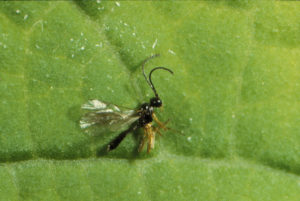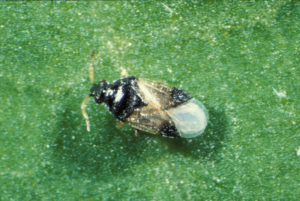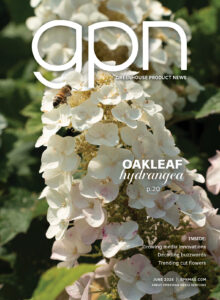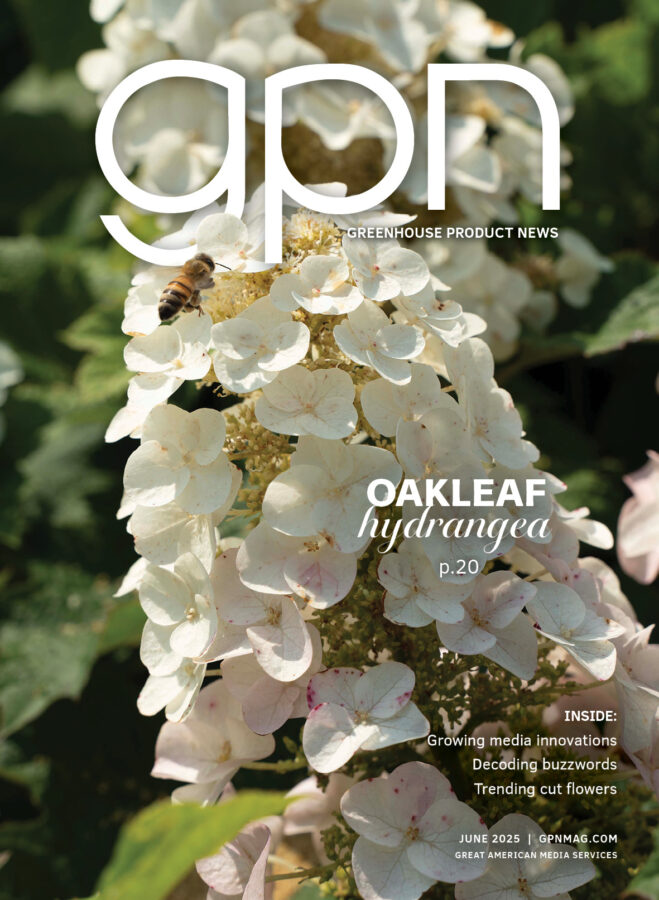What are the Effects of Adjuvants on Biological Control Agents?
Answer: You ask a very relevant question. First of all, what is an adjuvant? An adjuvant is a material incorporated into a pesticide mixture or solution to improve or alter toxicity, mixing ability, persistence (residual activity), and/or other attributes that will enhance the activity (performance) of a pesticide or increase efficacy against insect and mite pests.
There are various types of adjuvants including surfactants. Surfactants are surface-active agents added to pesticide formulations to reduce the surface tension of water. By reducing the surface tension of water, this allows the spray solution to cover more leaf surface area; consequently, increasing contact with insect and/or mite pests. Insecticides may be used with organosilicone surfactants (e.g., CapSil) to enhance the wetting and spread of spray droplets on leaf surfaces, thus resulting in uniform distribution of the spray solution.

Initially, inert ingredients including surfactants were considered biologically benign. Nonetheless, the active ingredient of a pesticide may not be responsible for any negative effects on biological control agents (e.g., parasitoids and predators), but the inert ingredients in the formulation may be directly harmful. In fact, some surfactants or inert ingredients actually have insecticidal/miticidal properties with activity against soft-bodied insects and mites including: aphids, whiteflies, leafminers, and the twospotted spider mite (Tetranychus urticae). The way in which surfactants kill insect and mite pests may be associated with suffocation, drowning, or by disruption of cell membrane integrity. As such, there are concerns regarding the effects biological control agents.
Although there is limited information on the susceptibility of biological control agents to surfactants, some studies have demonstrated that some surfactants can be directly harmful to certain biological control agents. In fact, studies have shown, primarily under laboratory conditions, that certain surfactants — especially the organosilicone surfactants — are directly harmful to biological control agents. For instance, one study reported that the nonionic silicone surfactant Sylgard 309 was directly harmful to the aphid parasitoid, Diaeretiella rapae, by reducing the intrinsic rate of increase (population growth rate) by 18 percent compared to the control. However, the same study showed that the “mummy” stage, where the parasitoid egg, larva and pupa are located, was less susceptible than the adult stage. Furthermore, although the insecticide pymetrozine (Endeavor) was not directly harmful to the parasitoid, the combination of Sylgard 309 and pymetrozine was synergistic (mortality is greater than the individual treatment-combination); resulting in a 39 percent reduction in the intrinsic rate of increase compared to the control.

In another study, the nonionic organosilicone surfactant, Silwett L-77 affected the eclosion (emergence of adults from pupae) of several parasitoids. However, in a subsequent study, Silwett L-77 was not directly harmful to the parasitoid, Tamarixia radiata. In our studies conducted in the Department of Entomology at Kansas State University, we found that CapSil increased the toxicity (by means of synergistic activity) of certain insecticides to rove beetle, Dalotia coriaria, and insidious flower bug, Orius insidiosus, adults.
There are a number of factors that can influence the effect of surfactants on biological control agents including: rate used, life stage exposed, and type of biological control agent — parasitoid or predator. Therefore, proper timing — that is when the least susceptible life stage is present (e.g., egg or mummified stage) — may alleviate any direct effects of pesticides on biological control agents.









 Video Library
Video Library 


















